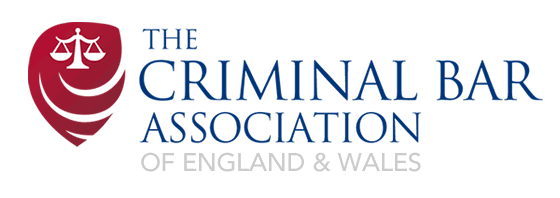Monday Message 26.04.21

Diversity at the bar and judiciary:
Serving judges rarely speak out in public save in respect of the cases over which they preside. Consequently, when a letter in yesterday’s Sunday Times from a group of eight serving judges calls for a parliamentary inquiry into what they allege is, “discrimination, bullying and leadership structures within the judiciary, and of the system for appointment and promotion of judges” then the allegations merit scrutiny. Amid other issues raised, this judicial group, members of which have withheld disclosure of their individual identities, claims that those who applied to be a judge last year were more likely to be shortlisted if they were white with 33% of white candidates making the shortlist whilst only 16% of those from ethnic minorities did so, according to Judicial Appointments Commission data.
Our own examination of official Government data on the current composition of “Judges and non-legal members of the judiciary” provides separate evidence indicating that, whilst there may be some signs of progress in terms of the percentage of BAME practitioners overall both within the bar and the judiciary when compared with the general population, when one looks at the number of black senior practitioners and judges, in particular, figures remain low both generally and in terms of the percentages relative to the population as a whole.
Making sense of statistics on diversity is an important first step on the collective journey along which we must travel in order to ensure that our society, in all its forms, is properly reflected across the bar and the judiciary to ensure fairness in relation to all those with whom we interact, whether it be as prosecution, defence or judge.
In January 2020, Government published the last comprehensive breakdown on judicial composition: “on 1 April 2019, 92.6% of court judges were White and 7.4% were from Asian, Black, Mixed and Other ethnic groups (out of those whose ethnicity was known); 88.9% of tribunal judges were White, and 11.1% were from the Asian, Black, Mixed and Other ethnic groups; Asian people made up 3.6% of court judges and 5.6% of tribunal judges, the second highest percentage after the White ethnic group; 8% of court judges were BAME and 12% of Tribunal judges were BAME”. Closer examination of the statistics revealed that only 1.1% of court judges were black. Amongst Tribunal judges, the figure rose slightly to 1.8%.
These statistics need to be compared to the population of England and Wales. According to a recent government analysis of the 2011 census, 86% of people classified were from white ethnic groups with 80.5% identifying as White British and 4.4% with the Other White ethnic group. The census pointed to 7.5% of the population being from Asian ethnic groups and 3.3% from Black ethnic groups.
The latest Government data classifying “diversity of the judiciary”, as at 1st April 2020, finds that, “among a total of 16,946 practising barristers, 2325, or 15%, identified as Black, Asian and minority ethnic (BAME). The proportion is higher in the junior bar with 2,159 BAME practitioners, 16% of the total 15,042 of juniors, while among silks 166, or 9% of the 1,904 QCs identify as BAME. Within the BAME grouping those identifying as Asian or Asian British total 1,134, or 6.7% of all barristers, which is just below the 7.5% identifying as such within the wider population of England and Wales. The Asian or Asian British grouping accounts for 78 QCs, 4.1% of all QCs. By comparison there are 503 barristers identifying as Black or Black British, 3% of all barristers. The Black or Black British group accounts for 23 QCs, just 1.2% of all QCs.”
Criminal Legal Aid Review – assistance needed on diversity focus groups:
A review into pay, working conditions and the knock-on impacts for diversity within the criminal bar is only as effective as the data collected and the experiences shared by criminal practitioners. The Bar Council needs our help. Please can more volunteers come forward to participate in focus groups being run on behalf of the Ministry of Justice as part of the call for evidence in the Criminal Legal Aid Review. Volunteers should contact the CBA Administrator and he will pass on the names. The groups are as follows:
Group 6: Black Practitioners Group (Barristers)
Date: Thursday 29th April 2021
Time: 5.30pm – 7pm
The purpose of this focus group is to understand the barriers and obstacles faced by Black barristers. For this focus group, we would like a group of 10-12 individuals who identify as Black, African, Caribbean, Black British African/Caribbean or any other Black, African or Caribbean background. We are seeking 10-12 participants who are:
- Engaged in Criminal Legal Aid work
- Geographically diverse (participants who are based in different locations across England & Wales)
The panel welcome the views from both junior and senior practitioners and are keen to hear from practitioners of all levels of experience.
Group 7: Black, Asian and Minority Ethnic Practitioners Group (Barristers)
Date: Tuesday 4th May 2021
Time: 5.30pm – 7pm
The purpose of this focus group is to understand the challenges faced by barristers who identify as Black, Asian or within another minority ethnic group. We are seeking a group of 10-12 participants:
- That identify as being from an ethnic minority background.
- Geographically diverse (participants who are based in different locations across England & Wales)
The panel welcome the views from both junior and senior practitioners and are keen to hear from practitioners of all levels of experience.
Crown Court Sitting Days and extra court rooms for crime:
HMCTS confirmed last week that, as regards the budget for Crown Court sitting days, “[t]here will be no limit on the number of days Crown Courts can sit for the 2021/22 financial year.” There was no mention of any forward planning for 2022/3. It is obvious that there should be no limit to sitting days this year in order to maximise the volume of cases travelling through the courts but it would be far more reassuring if a firm commitment was made right into 2023 so that a clear message is given to the public that this Government is committed to adding extra criminal court rooms and keeping them open for the full two years needed to return the backlog to a level acceptable to the public.
The current state of the criminal justice system was comprehensively summed up in a thorough BBC article published last week along with a special report that aired on BBC News at Ten on the impact of delays to trials as told, first-hand, through the experience of both a complainant and a defendant. The link to that article can be found here.
It includes an abridged clip of an interview that aired with ‘Jenny’ who has had to endure six postponements to her domestic abuse case. The trial date is currently set for 2022, which will be four years after she made her allegation of a serious criminal offence to police. Sadly, her experience is all too common and sums up years of under investment in our criminal justice system.
HMCTS added in its Crown Court update last week, “[w]here appropriate, judges continue to deal with a range of work remotely, including sentencing hearings. As we continue to boost recovery in the courts following the pandemic, this will help them maximise capacity across the justice system and safely hold as many hearings as possible over the coming year.”
To be clear, “maximising capacity” must involve ensuring the continued existence of the current batch of Nightingale Crown Court rooms for crime and then setting about doubling that number, whilst using CVP for administrative proceedings all within existing operating hours. There would be a sense of absurdity in Government going from one extreme to another in seeking to “sweat the estate” after they had fought to ensure that so many court rooms remained locked for so long. Plans need to be made now for a system which embraces more court rooms and more judges and a working environment which encourages more individuals to come to the criminal bar; a system borne out of a reasoned assessment of future needs rather than one that can barely cope, lurching from one crisis to the next.
